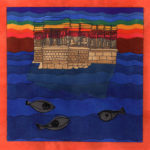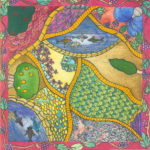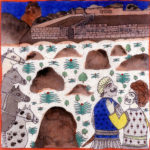2008 | SONAL MITHAL
PAINTINGS: JAIDEV THAKUR
PUBLISHER: TRANSPEK-SILOX AND HERITAGE TRUST BARODA
This book is a collection of oral stories, historical anecdotes, narratives from devotional songs and traditional theatrical performances. The collection weaves together a story about a place, Champaner-Pavagadh, as it would appear to a visitor who is traversing the ruins of the site. The primary source of information for this book has been songs sung during the festival of Navratri; songs for the traditional dance-form, garba; folklores; historical plays; stone inscriptions and coins; fifteenth century historical texts; and the site itself.
Each story is accompanied by a painting. Jaidev Thakur created those paintings, after a close reading of stories. The paintings all have at least one architectural structure as a background, forming the context for the story to unfold. Almost all stories selected for this book are associated with some architectural structure on the site, however ruinous its condition might be.
Extract from the story Halu versus Khorassani
In the outskirts of Champaner, the sultan had created beautiful gardens. When this city was being built, a Khorassani visited the sultan and expressed his willingness to build a garden that would please him immensely. The sultan asked him to select a place, near the city, which he found suitable and ordered his ministers that they should provide the Khorassani with whatever he needs. The Khorassani constructed a beautiful garden with small ponds, fountains and artificial waterfalls. This particular style of landscaping was not prevalent in Gujarat earlier, or for that matter, anywhere in India. The garden turned out to be very beautiful. The sultan was delighted and rewarded the Khorassani with gold and silks for his efforts. The Khorassani, anxious to keep the secret of his fountains and landscape design unknown, employed only ignorant laborers, and would not allow any one to inspect the progress of the work.
Soon afterwards, Halu, a Gujarati carpenter, approached the sultan and requested that if he be allowed, he could create a garden rivaling the splendor of the Khorassni’s garden. The sultan gave him permission and soon Halu was able to lay out a garden which excelled that of Khorassani. This surprised the sultan. He asked Halu…



